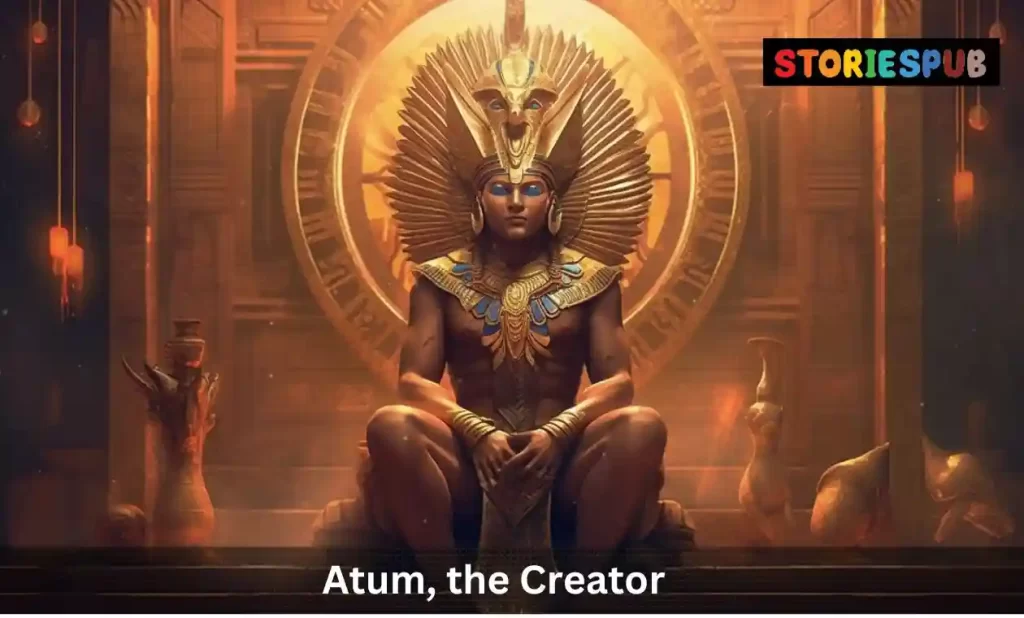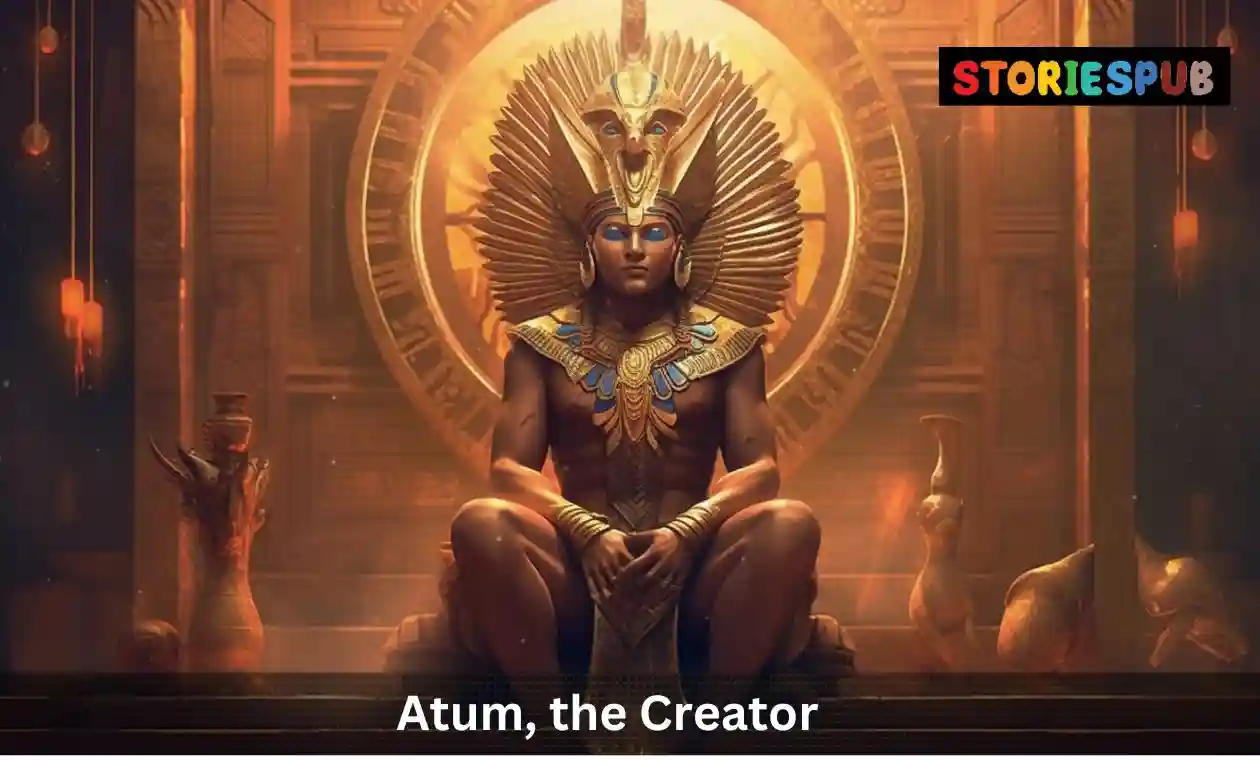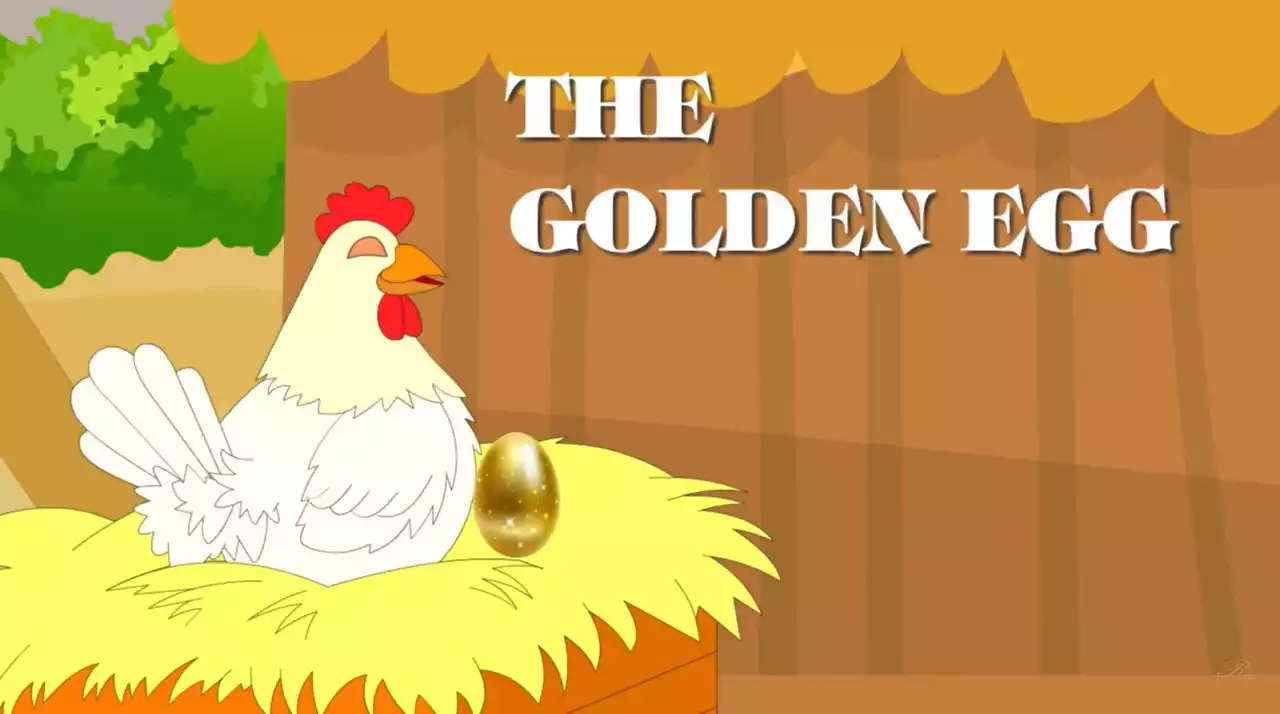Atum: The Creator God of Ancient Egypt

Introduction
The Creation God with a Double Crown
The ancient Egyptians had a rich and complex mythology, full of gods and goddesses that represented various aspects of their culture and society. One such god is Atum, who was the creator god of the Heliopolitan Ennead, a group of nine deities worshipped in Heliopolis, an ancient city in Lower Egypt.
Atum is often depicted as a man with a double crown – the white crown of Upper Egypt and the red crown of Lower Egypt combined into one headdress. This symbolized his role as both creator god and ruler over all parts of Egypt.
Atum’s Physical Appearance
In art, Atum is typically shown as a man with human form, but sometimes he is also depicted as a serpent or bull. He has an elongated head with a beard and wears the double crown on top.
His body may be shown wrapped in linen or holding different symbols such as the ankh (the key to life) or the scepter (a symbol of power). Atum’s physical appearance reflects his importance in Egyptian mythology as well as illustrating some important aspects about the culture that worshipped him.
The double crown represents unity between Upper and Lower Egypt while his elongated head symbolizes power over life and creation. Overall, Atum’s physical appearance speaks to his multifaceted role within ancient Egyptian culture – not only was he responsible for creating everything in existence but he also held important political power over all parts of the country.
The Creation Myth of Atum
As the god of creation in ancient Egyptian mythology, Atum was believed to be the first and most important deity in existence. According to the creation myth, Atum emerged from the waters of chaos at the beginning of time. He existed in a state of complete loneliness and decided to create other beings to keep him company.
To begin this process, Atum created himself. He was both male and female, and used his own body parts to bring forth other gods and goddesses.
Atum began by spitting out his own saliva onto the ground, which then became Tefnut – the goddess of moisture. From there, he sneezed out Shu – the god of air – who separated Tefnut from their father’s body.
Desiring more companionship, Atum then created Nut – the goddess of sky – by stretching out his arms wide above his head and arching his back until she appeared between them. He created Geb – the earth god – by lying down on his back with Nut arched over him.
Atum’s power as a creator continued even after these initial creations. He went on to create many more gods and goddesses, each with their own unique abilities and domains over different aspects of life on earth.
Despite being self-created, Atum is often depicted as having a human form with a double crown – one representing Upper Egypt (the southern part) while another representing Lower Egypt (northern part). This symbolized that he was considered not just a creator but also a king who ruled over all aspects of life.
Emergence from Chaos Waters
According to mythological stories surrounding Atum’s creation story, before any existence came into being everything was shrouded in darkness and chaos waters known as Nun – which means primeval ocean or abyss. It was believed that it took several thousands of years for Atum to emerge from these waters as an entity.
The story stated that Atum came into existence with no one else around him. He was all alone in the darkness until he decided to create others like himself.
Self-Creation
One of the most interesting aspects of Atum’s creation myth is the fact that he created himself before creating other gods and goddesses. This idea is highly symbolic, as it represents the idea that creation begins with oneself. Atum’s self-creation involved a process of transformation from nothingness into somethingness.
It was a conscious act, showing his ability to exert power over his own existence and destiny. His self-creation also suggests that he understood the importance of being independent and self-sufficient.
Using Own Body to Create Other Deities
Another fascinating aspect of Atum’s creation myth is how he used his own body parts to bring forth other gods and goddesses. This shows his incredible power as a creator, as well as his willingness to sacrifice himself in order to create life.
The process by which Atum created other gods involved various body parts being spat out or sneezed out, such as Tefnut (goddess of moisture) who was born from Atum’s saliva. Shu (god of air) emerged when Atum sneezed while Tefnut became pregnant with Shu.
In this way, Tefnut gave birth to Shu without any physical contact or union with anyone else. Overall, the creative force exhibited by Atum in ancient Egyptian mythology not only established him as one among many gods worshipped during those times but also helped define cultural norms and societal practices still existent today.
Role in Egyptian Religion
Atum was one of the most important gods in ancient Egyptian mythology. He was considered to be the creator god and the father of all other gods and goddesses. The ancient Egyptians believed that Atum was responsible for creating everything in the world, including humans, animals, and even the gods themselves.
As a result, he was worshipped as a powerful deity who had ultimate control over all aspects of life. One of the most important aspects of Atum’s role in Egyptian religion was his association with creation.
The ancient Egyptians believed that he created himself by emerging from the waters of chaos at the beginning of time. From there, he used his own body to create other gods and goddesses, as well as humans and animals.
This made him an incredibly powerful god who had complete control over all aspects of creation. As a result of his importance in Egyptian religion, temples were built in honor of Atum throughout Egypt.
These temples were typically large structures that included courtyards, hypostyle halls, and sanctuaries where priests could perform rituals to honor Atum. The most famous temple dedicated to Atum was located at Karnak in Luxor.
The Temple of Karnak was one of the largest religious structures ever built and it served as an important center for worship throughout much of Egyptian history. It featured a massive hypostyle hall with 134 giant columns that stood over 60 feet tall.
The walls were covered with hieroglyphs depicting scenes from Atum’s creation myth and other important religious stories. In addition to temples dedicated specifically to Atum, many other temples throughout Egypt included chapels or shrines dedicated to him as well.
These smaller structures allowed people outside of Luxor to pay their respects to this powerful deity without having to make a long journey. Overall, Atum played an incredibly important role in ancient Egyptian religion as the creator god and father of all other gods.
His association with creation made him one of the most important figures in Egyptian mythology, and his worship was central to many aspects of religious life throughout the country. The temples built in his honor, including the famous Temple of Karnak, serve as a testament to his enduring legacy in ancient Egyptian religion.
Depictions in Art and Literature
Atum in Ancient Egyptian Art
Atum was one of the most important deities in ancient Egyptian mythology. As a result, he was depicted frequently in art throughout the different periods of Egyptian history.
In art, Atum is often shown as a human figure with a double crown or as a serpent with a human head. He is also shown with many other symbols, such as ankh (the key of life), scarab beetle, and sundisk.
One notable statue of Atum can be found at the Temple of Luxor. The statue was originally carved during the reign of Amenhotep III (1390-1352 BCE) but later altered during the reigns of Tutankhamun (1336-1327 BCE) and Horemheb (1320-1292 BCE).
It shows Atum wearing the double crown and holding an ankh in his left hand while his right hand is raised to bless worshipers. Reliefs featuring Atum can also be found throughout ancient Egyptian temples.
For example, at Karnak Temple complex, there are many reliefs that depict scenes from Atum’s creation myth. In these reliefs, Atum is shown emerging from the waters of chaos and creating himself as well as other gods and goddesses.
The Book Of The Dead
The Book Of The Dead was a collection of religious texts that were used to guide souls through the afterlife. Many chapters within this book featured references to Atum’s creation myth and illustrated his importance within ancient Egyptian religion.
One chapter within The Book Of The Dead describes how Atum created Shu (air) and Tefnut (moisture) by spitting them out from his mouth. Another chapter describes how he created other gods such as Geb (earth) and Nut(sky), by masturbating and spitting them out from his mouth.
Atum is also mentioned in several spells within The Book Of The Dead, which were intended to protect the deceased during their journey through the afterlife. For example, Spell 175 describes how Atum will appear before the deceased and protect them from danger.
Atum’s Influence on Art and Literature
Atum’s influence can be seen not only in ancient Egyptian art but also in later periods. For example, during the Greco-Roman period, a new form of Atum emerged called Serapis. This new form combined attributes of various gods into one deity who was worshipped throughout Egypt and other parts of the Mediterranean world.
In addition, some scholars argue that Atum’s creation myth influenced later religions such as Gnosticism, which emerged in the 2nd century CE. Gnostics believed that a divine being had created the world but then became trapped within it and needed to be liberated.
This idea bears some resemblance to Atum’s creation myth where he creates himself before creating other gods and goddesses. Overall, Atum was an incredibly important figure within ancient Egyptian religion and his influence can still be seen today in art and literature from different periods of history.
Legacy
Atum, the creator god of ancient Egyptian mythology, continued to be a significant figure in religion and culture for millennia. The worship of Atum spanned different periods within Ancient Egypt from the Old Kingdom to the Ptolemaic period, and his legacy can still be seen today.
Atum’s worship was not limited to a particular time or place but spread throughout Ancient Egypt. The cult of Atum was prominent during the Old Kingdom when he was recognized as the primary creator god.
In later periods such as the New Kingdom, Atum was considered a more abstract deity who embodied divine power and creative force. The worship of Atum was not just confined to temples but also extended into people’s daily lives.
Throughout history, Egyptians believed that Atum gave them life and power, which they demonstrated through various rituals and ceremonies. People would offer prayers and sacrifices in his honor during special festivals like ‘Opet’ and ‘Menes.’
Even after the fall of Ancient Egypt, Atum’s legacy continued throughout North Africa. His influence can be seen in art from Nubia (now Sudan) where he is depicted wearing a double crown like other gods from New Kingdom Egypt.
Influence on Later Religions
Atum’s influence on religion did not end with Ancient Egypt but extended into later religions such as Gnosticism. Gnosticism is a religious movement that emerged around 100 CE in Mediterranean countries that combined elements of Christianity with Greek philosophy. In Gnostic traditions, “Atum” is known as “Adamas,” which means diamond or unbreakable.
They see Adamas as an emanation of God who creates all things according to his will- much like how Atum created everything out of chaos in Egyptian mythology. Adamas is also often associated with light or illumination because he represents divine knowledge that illuminates darkness.
This concept is similar to Egyptian mythology, where Atum was associated with the sun and considered a source of light and wisdom. Even beyond Gnosticism, Atum’s influence on religion can be seen in the Abrahamic faiths.
In Judaism, the Kabbalistic tradition considers Adam Kadmon (primordial man) to be an emanation of God who created all things. This idea is similar to how Atum created everything by speaking it into existence.
Atum’s legacy has endured for thousands of years and continues to influence religion and culture today. From his role as the creator god in Ancient Egypt to his influence on later religions like Gnosticism and Judaism, Atum’s impact on the world remains profound.
Conclusion
Atum, the god of creation, was a revered figure in ancient Egyptian mythology and religion. His story as the creator of everything in existence, including himself and other gods and goddesses, has fascinated scholars and historians for centuries. Atum was worshipped by Egyptians for millennia as the father of all gods and a symbol of creation.
Throughout his mythological story, Atum’s physical appearance is consistent. He is always depicted with a double crown that symbolizes his power over both Upper and Lower Egypt.
This powerful image gives insight into how the ancient Egyptians viewed Atum as one of the most important deities in their pantheon. Atum’s creation myth is one of the most intriguing stories in Egyptian mythology.
According to legend, he emerged from the waters of chaos to create himself before proceeding to create all other life forms on Earth. The fact that he created himself speaks to his immense power over all things- even his own existence.
As one of the most important deities in ancient Egypt, Atum was worshipped extensively throughout history by pharaohs and commoners alike. Temples were built in honor of him all across Egypt including the famous Temple Karnak which still stands today.
Depictions of Atum have been found extensively throughout Egyptian art and literature over thousands of years. His image is seen on statues, reliefs, paintings as well as many texts including The Book Of The Dead.
Atum remains a significant figure in mythology more than 3000 years after he first appeared on Earth according to legend. His importance can be seen through how his story has persisted throughout time; influencing later religions like Gnosticism while still inspiring people today to learn more about this fascinating god among gods that brought forth civilization itself with his creative power over earth itself
Hey kids, how much did you like Atum: The Creator God of Ancient Egypt? Please share your view in the comment box. Also, please share this story with your friends on social media so they can also enjoy it, and for more such Egyptian Mythology, please bookmark storiespub.com.
Related Post :
Atum FAQ
Why does Atum wear a double crown?
Atum wears a double crown to represent his rule over both Upper and Lower Egypt, symbolizing his unifying power.
What role does Atum play in the Egyptian pantheon?
As the creator god, Atum is responsible for the creation of the universe, gods, and humanity in Egyptian mythology.
How was Atum worshipped in ancient Egypt?
Atum was worshipped through prayers, offerings, and temples built in his honor, often alongside other gods in the Egyptian pantheon
How did Atum create the world in Egyptian mythology?
Atum created the world by emerging from the primordial waters of Nun and creating Shu (air) and Tefnut (moisture) through his own power.
What is the meaning behind Atum's name?
Atum's name is derived from the Egyptian word "tem," which means "to complete" or "to finish."
Is Atum mentioned in the Pyramid Texts?
Yes, Atum is mentioned in the Pyramid Texts as a key figure in the creation of the world and the afterlife.
How is Atum related to the Ennead of Heliopolis?
Atum is considered the head of the Ennead of Heliopolis, a group of nine gods responsible for various aspects of the world and its creation.
Were there any major temples dedicated to Atum?
The main temple dedicated to Atum was located in Heliopolis, an ancient Egyptian city known for its worship of sun gods.
v\How has Atum's symbolism influenced modern culture?
Atum's role as a creator god has inspired various art forms, literature, and studies of ancient Egyptian mythology in modern culture.
























